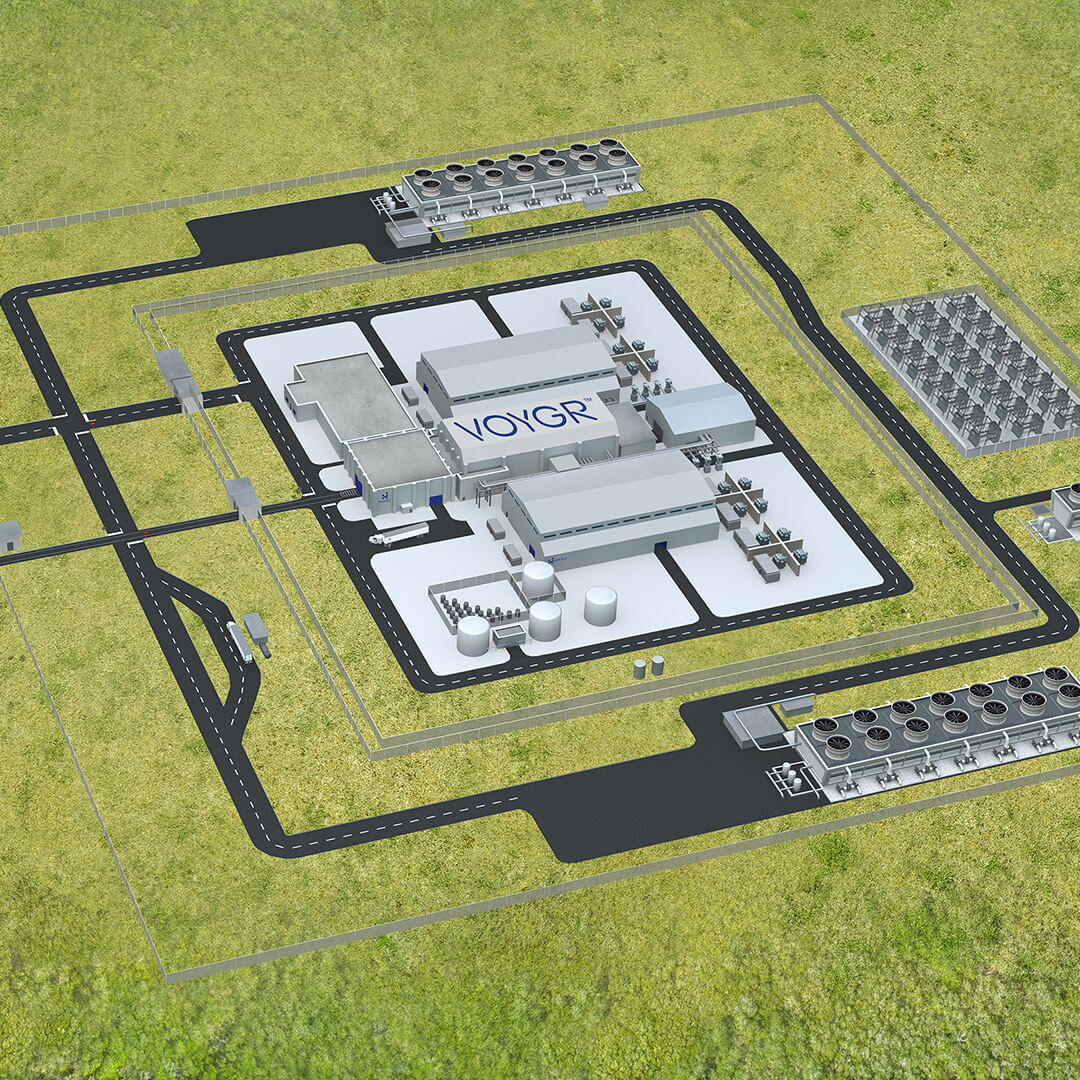An illustration of EDF’s NUWARD small modular reactor technology. (Image: EDF)
France’s Électricité de France and Polish renewable energy trader Respect Energy have signed a cooperation agreement to develop nuclear power projects in Poland based on EDF’s NUWARD small modular reactor technology, the companies jointly announced last Friday.
The Diablo Canyon nuclear power plant.
The California Public Utilities Commission (CPUC) has voted to open a rulemaking to consider extending the lifetime of the 2,289-MW two-unit Diablo Canyon nuclear power plant. The plant, which turns 50 this year, is the only remaining operational nuclear power facility in California. It generates nearly 10 percent of the state’s electricity needs.
The Rivne nuclear power plant in western Ukraine, home to four VVER pressurized water reactors. (Photo: Victor Korniyenko/Wikipedia)
In what it is calling a “major expansion” of its efforts to prevent a severe nuclear accident befalling Ukraine, the International Atomic Energy Agency yesterday announced that it is deploying teams of nuclear security and safety experts this week to the beleaguered nation’s nuclear power plants and the Chernobyl site. (The agency has already stationed a team of experts at Ukraine’s largest nuclear facility, the six-unit Zaporizhzhia plant, which has been under Russian military occupation since last March.)
Wes Hines (right), of the University of Tennessee’s Department of Nuclear Engineering, introduces the speakers for a session on nuclear engineering opportunities. (Photos: University of Tennessee)
The University of Tennessee–Knoxville Department of Nuclear Engineering hosted the inaugural Nuclear Engineering Department Heads Organization (NEDHO) Diversity Panel on October 27. Wes Hines, head of the university’s Department of Nuclear Engineering, was the moderator for the event. Invited to the speak were engineering professional Harold T. Conner, environmental scientist Dari Gabriel, and engineering student Jasmine Toy. These three panelists discussed overcoming challenges in their engineering education and/or careers to find success. A common theme that emerged from the conversation was that—in addition to their own determination to succeed—all three panelists benefited from caring adult guidance during their youth, as well as strong support from friends, family, and colleagues as they pursued their goals.
U.S. secretary of energy Jennifer Granholm and Japan’s minister of economy, trade, and industry Yasutoshi Nishimura lead energy discussions on January 9 in Washington, D.C. (Photo: DOE)
Researchers at Idaho National Laboratory have completed initial testing on a newly developed fuel test capsule that is expected to provide crucial performance data for sodium-cooled fast reactors. The Department of Energy announced on January 12 that the series of fuel testing experiments being carried out now at INL’s Transient Reactor Test Facility (TREAT) was developed through a joint project between the United States and Japan.
The first shipment of downblended surplus plutonium from SRS’s K Area leaves SRS. (Photo: DOE)
The Department of Energy’s National Nuclear Security Administration and Office of Environmental Management have completed the first shipment of downblended surplus plutonium transuranic (TRU) material from the K Area at the Savannah River Site in South Carolina to the Waste Isolation Pilot Plant in New Mexico.
A rendering of the planned demo plant. (Image: General Fusion)
SHINE’s isotope production building, called the Chrysalis, under construction in October 2022.
In a former farm field just outside the historic town of Janesville in south-central Wisconsin, a large concrete-and-steel building is taking shape. Dubbed the Chrysalis, the building will eventually house eight accelerator-based neutron generators, which start-up company SHINE Technologies will use to produce molybdenum-99. As the precursor to the medical radioisotope technetium-99m, Mo-99 is used in tens of millions of diagnostic procedures every year, primarily as a radioactive tracer.
At the heart of the Chrysalis will be the high-flux neutron generators, being supplied by SHINE’s sister company, Phoenix. The compact accelerators use a deuterium-tritium fusion process to produce neutrons, which in turn induce a subcritical fission reaction in an aqueous low-enriched uranium target (19.75 percent uranium-235) to produce Mo-99.












